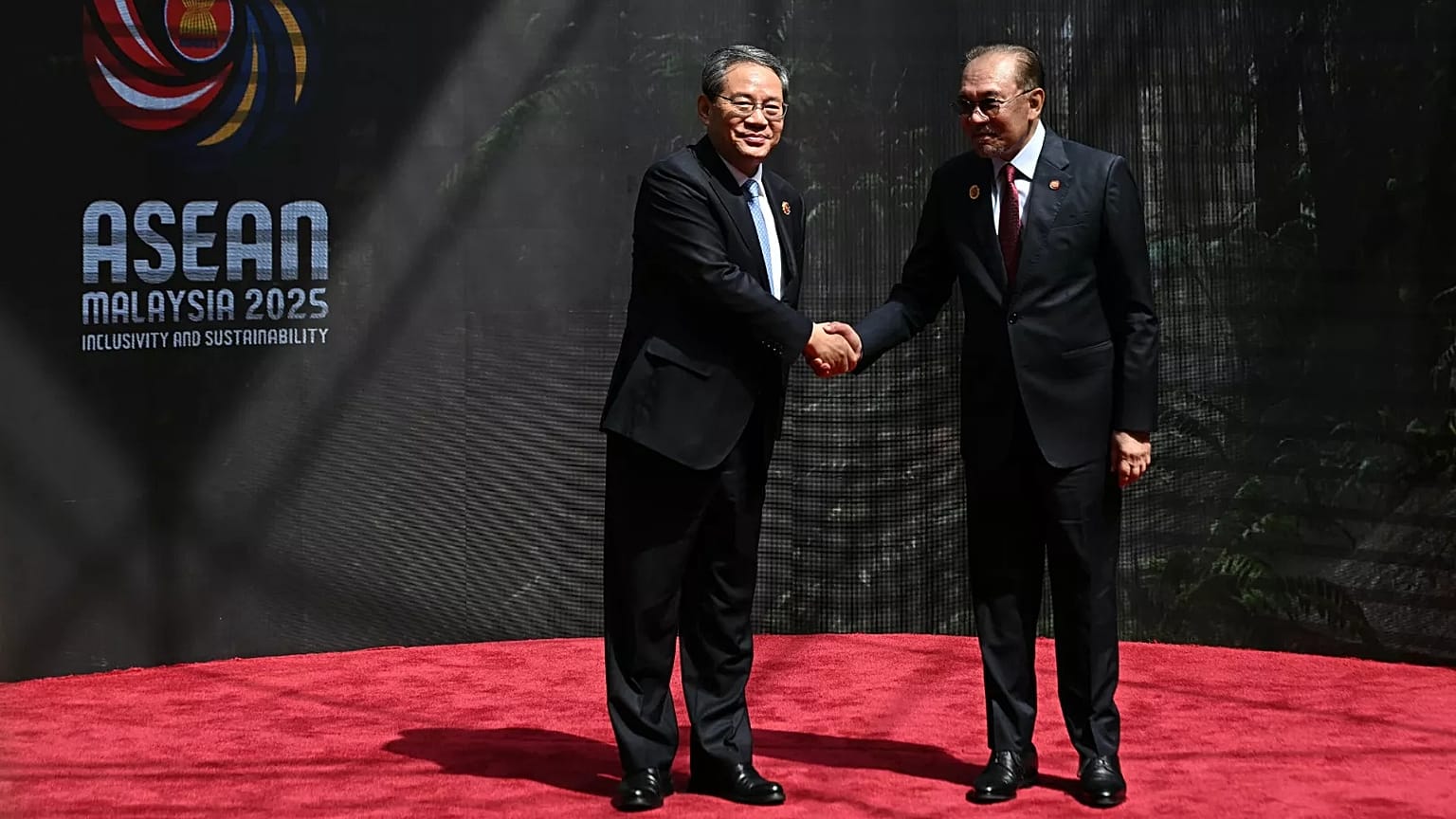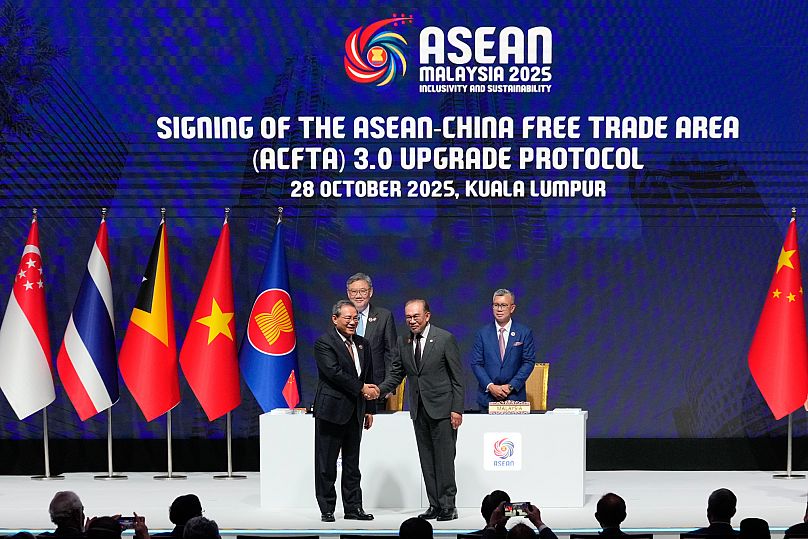The free trade area covers a combined market of more than 2 billion people, lowers tariffs on goods, and boosts flows of services and investment.
China signed an expanded version of a free trade agreement with the Association of Southeast Asian Nations (ASEAN) on Tuesday, with Premier Li Qiang pitching expanded economic ties with his country as an alternative to the protectionist policies of US President Donald Trump.
Li Qiang told an ASEAN-China summit meeting after the signing that closer cooperation could help overcome global economic uncertainties.
“Pursuing confrontation instead of solidarity brings no benefit” in the face of economic coercion and bullying. “Unity is strength,” he said in what can be regarded as a veiled swipe at Trump's trade policy.
The signing of the trade pact, presided over by Li Qiang and Malaysian Prime Minister Anwar Ibrahim, who is serving as ASEAN chair this year, came on the final day of the annual ASEAN summit and related meetings.
Earlier on Sunday, Malaysia's trade minister stressed that “ASEAN–China cooperation is important primarily because China has been ASEAN’s largest trading partner for many years. But one must also take note that ASEAN is now equally important to China, making it a two-way relationship in trade.”
What does the trade pact offer?
Officials say the ASEAN-China Free Trade Area 3.0 is expected to broaden integration across the region by covering new areas such as digital trade, the green economy, sustainability, and support for small and medium-sized enterprises, which make up the majority of ASEAN businesses.
The agreement is designed to make trade benefits more accessible, improve market entry for smaller players, streamline non-tariff procedures, and lower regulatory barriers.
The pact signed on Tuesday is the third revision of the long-standing agreement, which was first signed in 2002 and came into force in 2010.
The free trade area covers a combined market of more than 2 billion people and lowers tariffs on goods, boosting flows of services and investment.
Since coming into effect in 2010, two-way trade has surged from $235.5 billion in 2010 to nearly $1 trillion last year.
According to Li, “mutual reliance” between China and ASEAN members Brunei, Cambodia, East Timor, Indonesia, Laos, Malaysia, Myanmar, the Philippines, Singapore, Thailand, and Vietnam, pivoted this.
The Chinese Premier described the countries as “good neighbours and good brothers that are close in geography, culture, and sentiment.”
“Unilateralism and protectionism have seriously impacted the global economic and trade order, while external forces are increasing their interference in the region—many countries have been unreasonably subjected to high tariffs,” he said.
“By relying on each other and coordinating our actions, we can safeguard our legitimate rights and interests.”
Free trade pact comes amid US-China tensions
Meanwhile, with the prospect of a deepening trade conflict between China and the US, risking weakening economic growth worldwide, analysts believe the upgraded ASEAN pact would benefit China and countries in the region, especially in the areas of supply chains and sustainability.
“It also speaks to a global reality that non-US countries are coming together to strengthen trade relationships for their prosperity as a recoupling with the US is ongoing,” says Southeast Asian political analyst Bridget Welsh.
On Sunday, a US-China trade deal appeared to be drawing closer after officials from the world’s two largest economies said they reached an initial consensus for President Donald Trump and Chinese leader Xi Jinping to aim to finalise during their high-stakes meeting.
Trump is set to meet with Xi on Thursday in South Korea, the final stop of his trip through Asia.
















